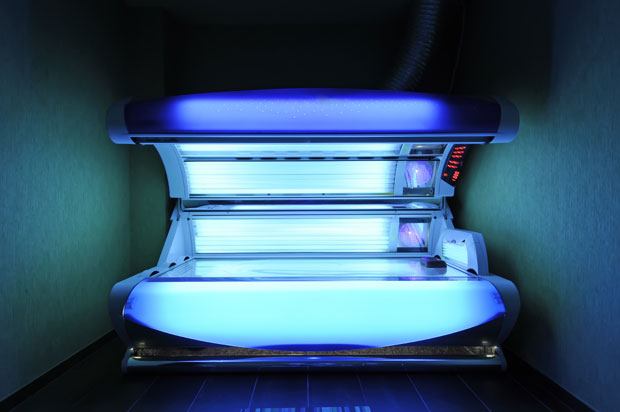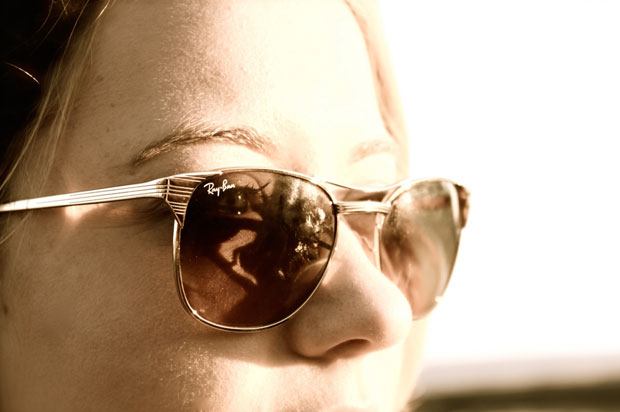Are sunbeds safe?

An increasing number of people prepare to bare their bits for the summer months by baking their bodies on sunbeds. But this kind of artificial tan does not protect against sunburn, and the long-term consequences of using a sunbed can be serious.
Why are sunbeds bad for you?
We hate to break it to you, but sunbeds are not safe. It’s well established that sunbeds are bad for you, especially when you’re young. It can be difficult to separate damage caused by sunbeds and damage caused by natural sunlight, and extensive exposure to neither is advisable, but using a sunbed will add to anyone’s risk of skin cancer or damage.
Risk of developing skin cancer
Cancer Research UK has warned that young skin cells are more vulnerable to sun damage than older skin cells.
Malignant melanoma, the worst form of skin cancer, has become the third most common cancer seen in 15-24-year olds and is now the fastest growing cancer in Britain. Premature ageing of the skin as well as eye diseases (if the correct precautions are not taken) are concerning side-effects affecting many people, but beware that symptoms can take as much as 20 years to appear. Tanning can also cause dry, itchy skin with blotches.
Because evidence is increasingly linking tanning booths to cancer, new controls are being proposed which will stop people under the age of 18 and people in high-risk groups from using sunbeds on health grounds.
Limiting the risks of using sunbeds:
- The World Health Organisation (WHO) recommends that you should not exceed two sessions per week, for no more than 30 weeks of the year.
- Teenagers should never use sunbeds.
- People with very fair skin (type I or type II) should stay away altogether.
- People with a lot of freckles or moles should not use sunbeds, or if they chose to do so, take extra care and be vigilant about any changes to freckles or moles.
- People who have had skin cancer or have a family history of the disease should not use sunbeds.
- People using medication that could make their skin more sensitive to UV should not use sunbeds.
- Spray-on fake tan from salons, tanning creams, foams and lotions for home use are much safer than a sunbed tan, and give an equally impressive effect (providing you apply them properly!).
- Goggles should be worn to protect the eyes from cataracts and other eye diseases.
- Always use sunscreen with SPF 15 or higher when out in the sun.
How do sunbeds work?
Sunbeds contain fluorescent tubes, which tan the skin by emitting UV radiation (ultraviolet rays), the same type of radiation that is found in natural sunlight. Two types of radiation reach the earth; UVA and UVB rays. About 95% of sunlight is made up of UVA rays, which causes skin ageing, and about 5% is UVB rays, which causes skin to burn. Though Britain has sunbed safety standards, researchers say nine out of 10 sunbeds give off unsafe levels of UV.
Ten minutes of sunbed use compares to about two hours of exposure to direct sunlight. Sunlight promotes the body’s production of Vitamin D, and can also be good for conditions such as psoriasis, eczema, rickets or jaundice. However, extensive exposure to sun can be dangerous, and tanning is the skin’s way of protecting itself from further UV damage.
Do sunbeds give you vitamin D?
Here’s the thing. ‘Sunbeds.com’ claims ‘multiple studies into this area’ show that you can produce vitamin D by using sunbeds. ‘Skincancer.org’, however, has this to say on the matter: ‘A tanning bed will never provide you with the vitamin D that you need, nor is it safer than tanning outdoors. Not understanding the facts can literally mean the difference between life and death.’
When deciding whether sunbeds are safe for you to use, it’s worth considering these grave warnings. It is far safer to get vitamin D from sunlight exposure, and these days you can also get it from supplements if your levels are too low.
How popular are tanning beds?
About 10% of the population in Northern Europe use sunbeds to get a tan, and it is most popular among people with fair skin. As western culture has come to associate tanned skin with health and beauty, many of us feel the pressure to jump under these fake rays in the name of vanity. In fact, about 24% of British 16-24 year-olds have used a sunbed. And there’s even been concern recently about the growing number of people as young as 13 joining the club. The number of young men who use sunbeds has also increased. For some, tanned skin has become so addictive that a whole new term – “tanorexics” – has emerged to describe them.
Check out the rest of The Mix’s ‘your body’ content here.
Picture of sunbed by Shutterstock
Next Steps
- Chat about this subject on our Discussion Boards.
By The Mix Staff
Updated on 02-Nov-2022
No featured article










